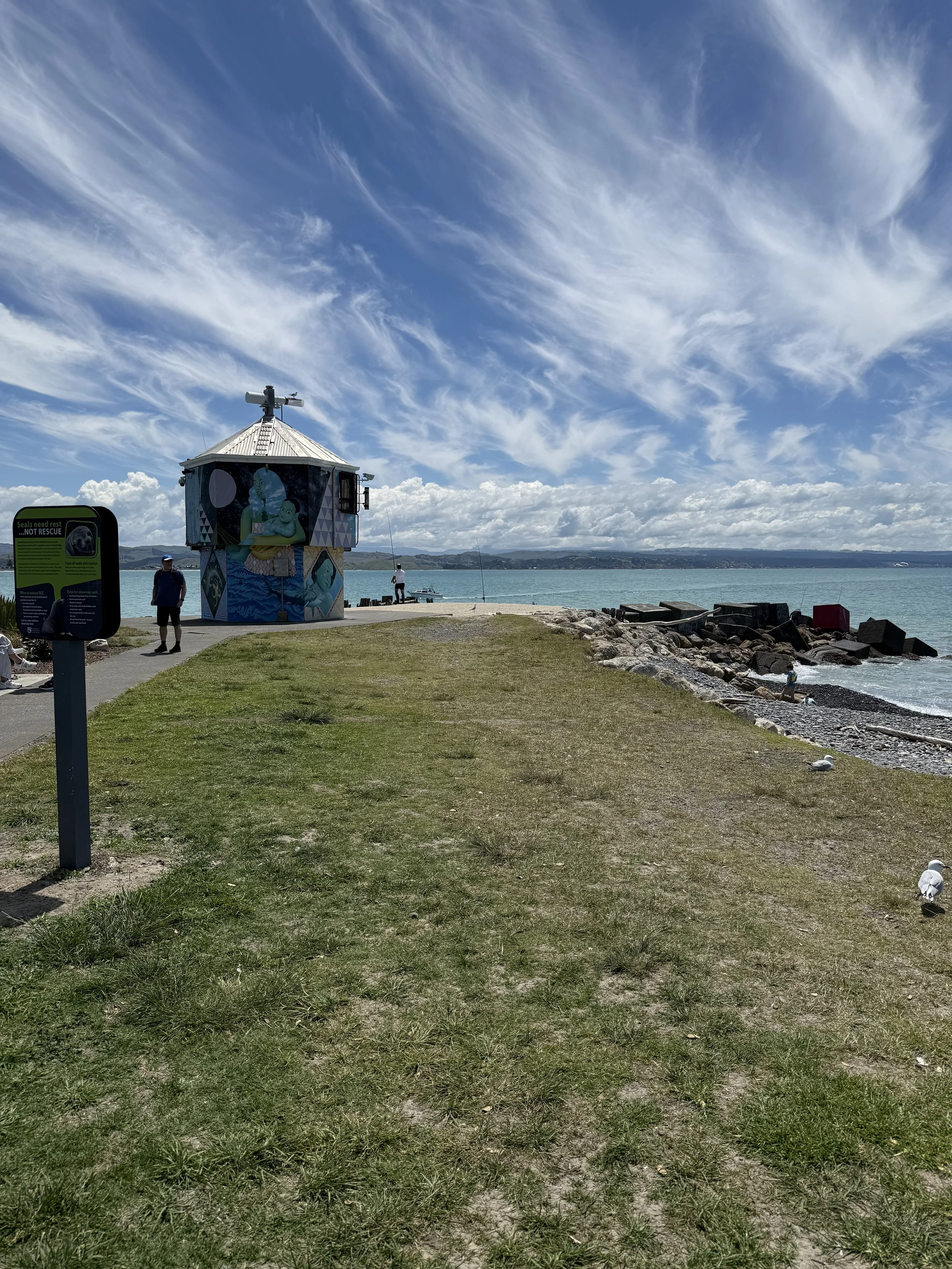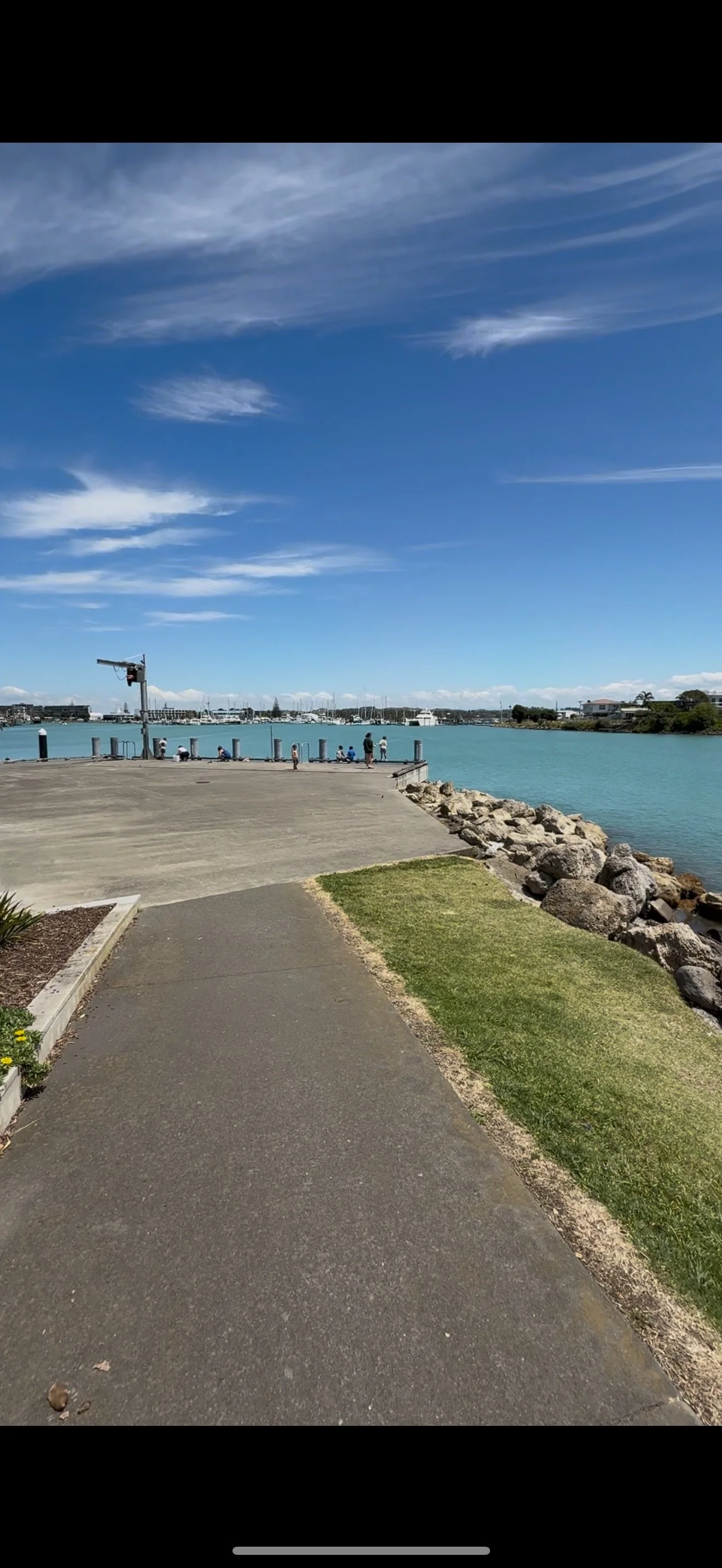Discover Ahuriri’s Heritage Gems: A Walk Through Time
Ahuriri is a place where history meets the sea, offering walkers the chance to delve into Napier’s fascinating past while enjoying spectacular coastal views. This curated heritage walk through Ahuriri takes you along the waterfront, past historic landmarks, and into the heart of Napier’s original port. Along the way, you’ll uncover stories of resilience, transformation, and cultural significance.
1. Spriggs Park Reserve: Traces of the Past
Begin your journey at Chatham Street, facing the sea. Cross Hardinge Road and step onto the formed walkway that runs along the seaward side of Spriggs Park Reserve. From this vantage point, you’ll enjoy sweeping views across Hawke Bay, stretching north to Westshore Beach, Bay View, and Whirinaki.
Look closely at the water-worn piles marking the tide line – these are the remains of the sea defence wall built in 1876 by the former Hawke's Bay Provincial Council. This structure played a crucial role in stabilising the beach and protecting the coastal strip from storm surges, safeguarding homes in the area.
2. Te Karaka Reserve: A Site of Transformation
Follow the walkway past Spriggs Park children’s playground, along the boardwalk, passing Ahuriri Beach on your left, which is Napier’s only swimming beach. Follow the boardwalk across a road to Te Karaka Reserve. This spot was formerly known as Perfume Point, due to its less glamorous past as a sewage discharge site. The area has since undergone a remarkable transformation. Once a petroleum storage tank depot, the land was purchased in 1994 by Napier City Council to enhance the city’s foreshore reserves.
Today, Te Karaka Reserve is a vibrant hub of activity. It’s a popular fishing spot for locals and an ideal place to watch boats come and go as they navigate the waters of Hawke Bay. The octagonal building you’ll see here is the starter box used by the Napier Sailing Club to oversee yacht races, tying the site to Napier’s proud maritime heritage.
3. The Inner Harbour: A Changing Landscape
Turning south, the boardwalk narrows as it follows the channel that connects the Ahuriri Estuary to the sea. Before the 1931 earthquake, this channel was part of a vast lagoon fed by the Tutaekuri River. The earthquake dramatically reshaped the landscape, uplifting land and altering the estuary’s size and flow.
The boardwalk ends at the Hawke's Bay Sport Fishing Club’s boat ramp. From here, follow the wharf along Nelson Quay, where fishing boats and motor launches find shelter in what’s known as the Iron Pot.
4. The Maritime History of The Iron Pot and The Old Customhouse
The original wharf structures at the Iron Pot stand high above the waterline, a stark reminder of the earthquake's power. Nearby, The Old Customhouse, built in 1904, is a treasure trove of Ahuriri’s rich maritime history.
This historic building, now a museum, houses a fascinating collection of photographs and artefacts chronicling Ahuriri’s evolution as Napier’s original port. Visitors can explore the museum every Sunday from 11 am to 4 pm during the summer months and on the first Sunday of every month during winter. Don’t miss the iron trypot outside, once used by European whalers to render whale oil.
This site is also of great significance, where an outstanding Māori identity, Tareha, survived the massacre at the Battle of Te Pakake fought near the Iron Pot in 1824. Later recognised as one of the five principal chiefs of Heretaunga after the signing of the Treaty of Waitangi, Tareha was a central figure in the Ahuriri land purchase of November 1851 and became the first Māori Member of Parliament for Eastern Māori in the late 1860s.
5. West Quay: Wool Stores and Earthquake Resilience
Rounding the western end of Customs Quay brings you to West Quay, where the fishing fleet ties up. It was here, on 3 February 1931, that the Royal Navy destroyer HMS Veronica transmitted the first report of the earthquake disaster to the outside world. The ship's radio operator sent the message, while the rest of the crew assisted in emergency rescue work amidst the devastated and burning town.
Along the quay, former wool stores reflect another chapter of Napier’s history. Once filled with wool ready for export, these buildings now house bustling cafés, restaurants, apartments, and bars, offering a vibrant blend of past and present.
6. The National Tobacco Company Building: A Masterpiece of Art Deco
For an architectural grand finale, head left along Lever St (just after the iconic Shed 2 On the Quay) and cross the railway track and Bridge Street and head left to the corner of Ossian Street. Here, you’ll find the National Tobacco Company Building, one of New Zealand’s most photographed buildings and a jewel in Napier’s architectural crown.
This beautifully restored Art Deco masterpiece, designed by renowned architect Louis Hay, is regarded as one of Napier’s most elegant commercial buildings. Built in the 1930s, it stands as a monument to Gerhard Husheer, one of the founding members of New Zealand’s tobacco industry. The craftsmanship of local artists is evident in every detail, making it one of Louis Hay’s best-preserved public works.
Today, the building is home to the National Distillery Company, which produces premium craft spirits. They offer guided tours and tastings, where you can learn about the distilling process and sample their products. Bottles are available for purchase, and the distillery is open Thursday to Sunday, from 1 pm to 5 pm.
Why Walk Ahuriri?
Ahuriri’s heritage walk offers a unique blend of history, culture, and stunning coastal scenery. From the remnants of early sea defences to Art Deco architecture and stories of resilience after the 1931 earthquake, every step reveals a piece of Napier’s rich past.
This walk is perfect for history buffs, casual strollers, or anyone wanting to connect with Napier’s story. So, lace up your walking shoes and prepare to uncover the heritage gems of Ahuriri!








